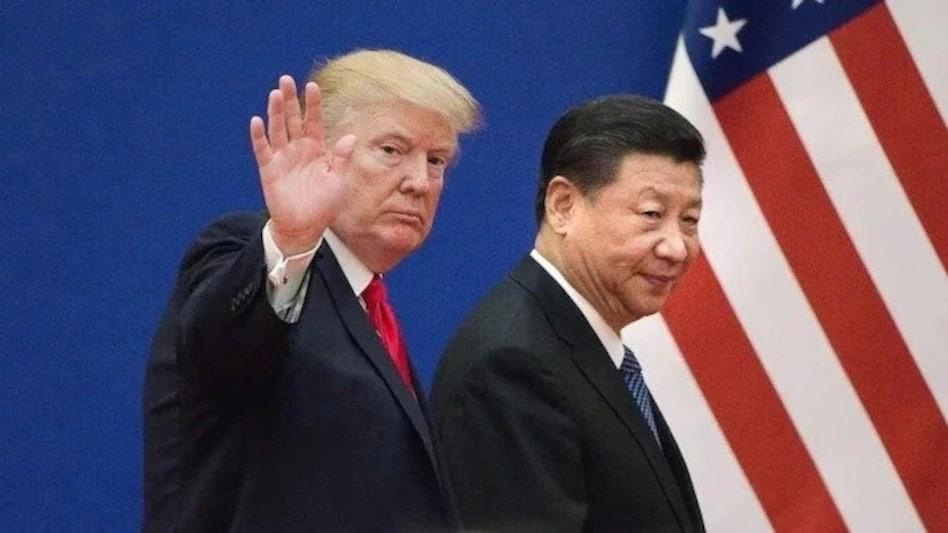U.S.–China Trade Breakthrough Eases Tariff Concerns Ahead of Trump–Xi Summit
In a significant step toward easing global trade tensions, the United States and China have reached preliminary agreements on several key economic issues ahead of the anticipated meeting between U.S. President Donald Trump and Chinese President Xi Jinping. The latest development was confirmed by U.S. Treasury Secretary Scott Bessent, who announced that the threat of imposing up to 100 percent tariffs on Chinese imports is now “effectively off the table.”
During an interview with CBS News, Secretary Bessent described the discussions as “very good” and emphasized that the possibility of doubling current tariffs on Chinese goods no longer stands. This signals a notable de-escalation after months of uncertainty surrounding U.S. trade policy toward China.
The easing of tensions comes after months of mutual economic pressure. China had recently introduced new export restrictions targeting critical materials and advanced technology sectors, prompting the United States to consider steep retaliatory tariffs. Now, as President Trump and President Xi prepare to meet in person for the first time since Trump’s return to the White House, both sides appear ready to dial back hostilities in favor of negotiation.
A Chinese official told Bloomberg that an “initial consensus” had been achieved addressing several critical areas, including export controls, shipping fees, and cooperation in curbing the spread of illicit substances such as fentanyl. The move indicates a renewed willingness by both nations to engage in constructive dialogue rather than extend the cycle of economic retaliation.
The emerging deal reportedly extends beyond tariff threats and covers a range of trade and technology issues. It reportedly resolves disputes surrounding the sale of the popular short-form video app TikTok and secures continued U.S. access to Chinese rare-earth magnets—essential materials for manufacturing electronics, renewable energy components, and defense technologies. This access is considered vital for U.S. industry stability and supply-chain security.
Another major outcome involves agricultural trade. Secretary Bessent confirmed that China plans to make “substantial” new purchases of American soybeans. This commitment could bring much-needed relief to U.S. farmers affected by reduced Chinese demand in recent seasons. The move is viewed as a goodwill gesture by Beijing, reflecting a desire to foster more balanced trade relations with Washington.
The upcoming Trump–Xi summit carries not only economic but also political significance. It marks the two leaders’ first face-to-face exchange since the start of Trump’s second term, setting the stage for a possible reset in bilateral relations. Both sides have publicly highlighted progress, signaling a mutual intent to manage expectations and avoid escalating into another trade confrontation.
For global markets, the removal of the “100 percent tariff threat” is a welcome relief. Investors and manufacturers had feared that such extreme measures could disrupt supply chains, raise costs, and destabilize global trade flows. While the tone between Washington and Beijing has shifted toward dialogue, analysts caution that deep structural differences remain unresolved. Issues like technology transfer, state subsidies, and strategic control over rare-earth resources continue to challenge long-term trade realignment.
From Washington’s perspective, stepping back from the threat of sweeping tariffs could provide negotiators with greater flexibility to secure specific concessions from Beijing in upcoming discussions. For China, demonstrating cooperation on trade, tech, and agricultural fronts reinforces its strategic interest in maintaining stable economic ties and avoiding further confrontation with the United States.
However, the latest agreement remains preliminary. Implementation and compliance from both sides will determine whether this represents a lasting thaw or just a temporary easing of tensions. Domestic political dynamics in both nations also pose potential constraints—each leadership faces hard-line pressure not to appear overly conciliatory.
For now, the mood surrounding U.S.–China trade talks has shifted from confrontation to cautious optimism. The upcoming Trump–Xi meeting will serve as a critical test of whether both nations can transform preliminary agreements into a durable framework for cooperation. If successful, this breakthrough could mark a turning point for global trade stability and investor confidence.

